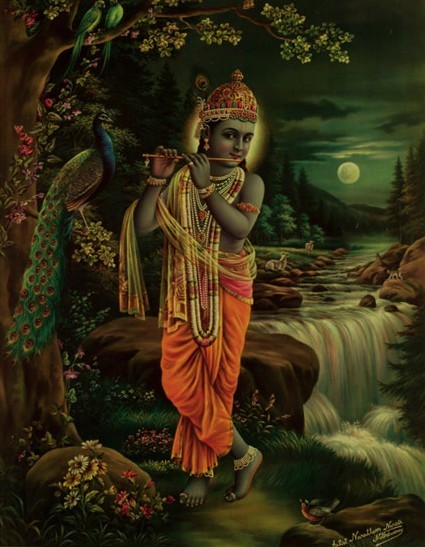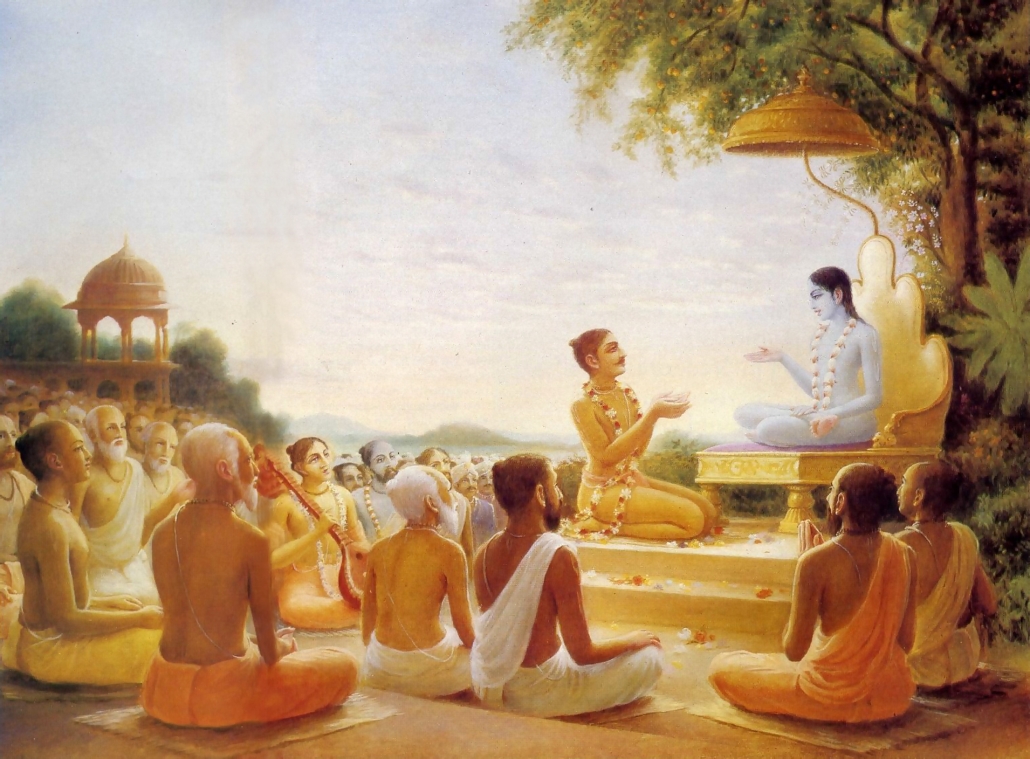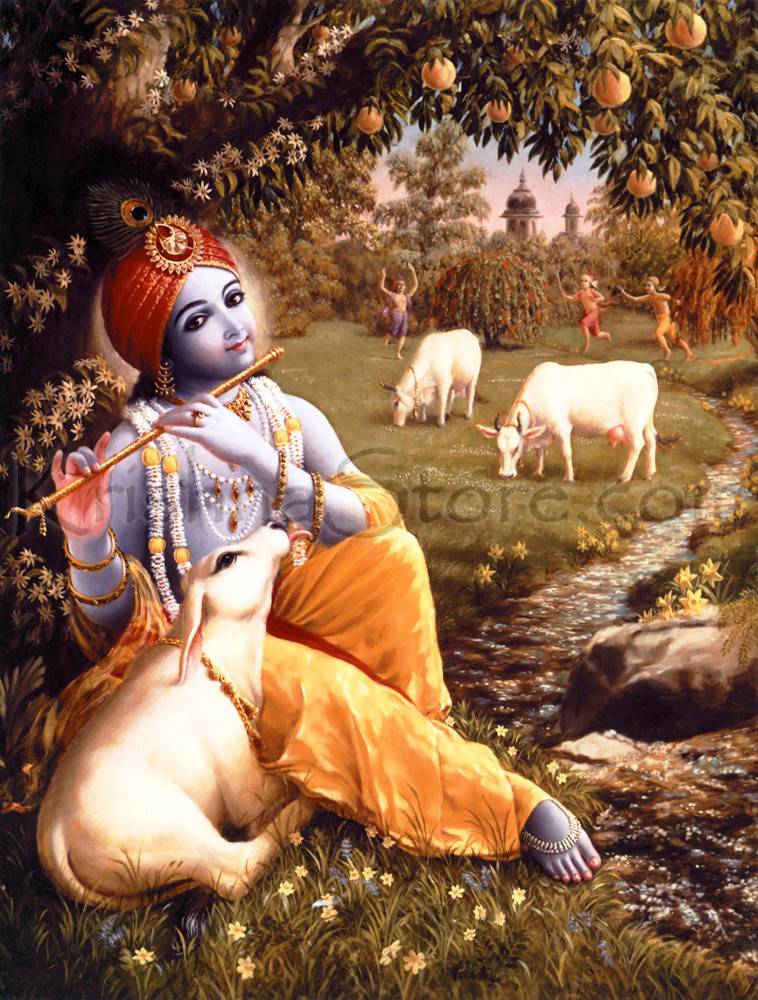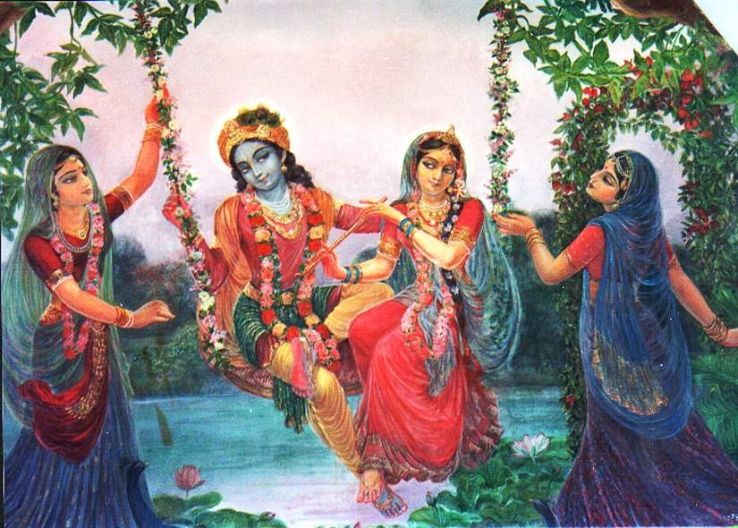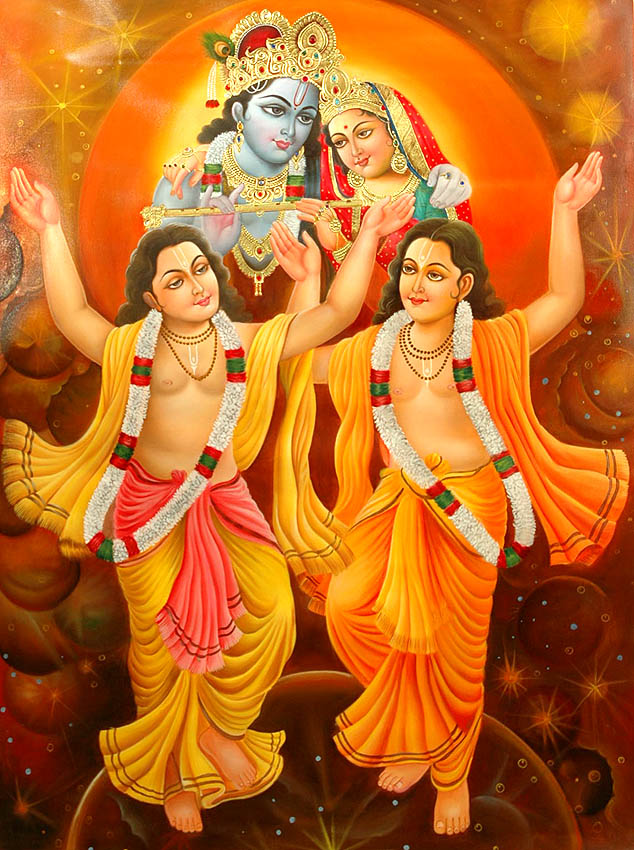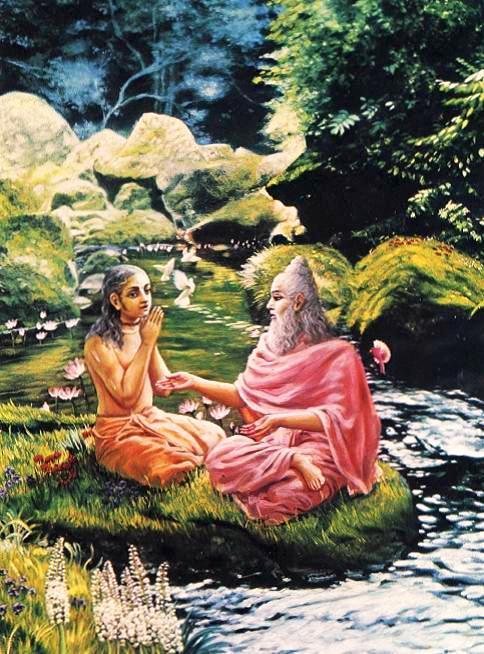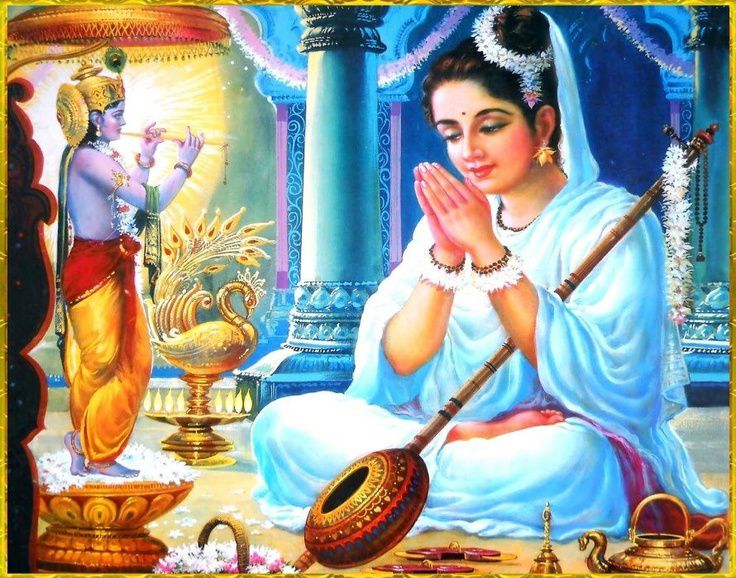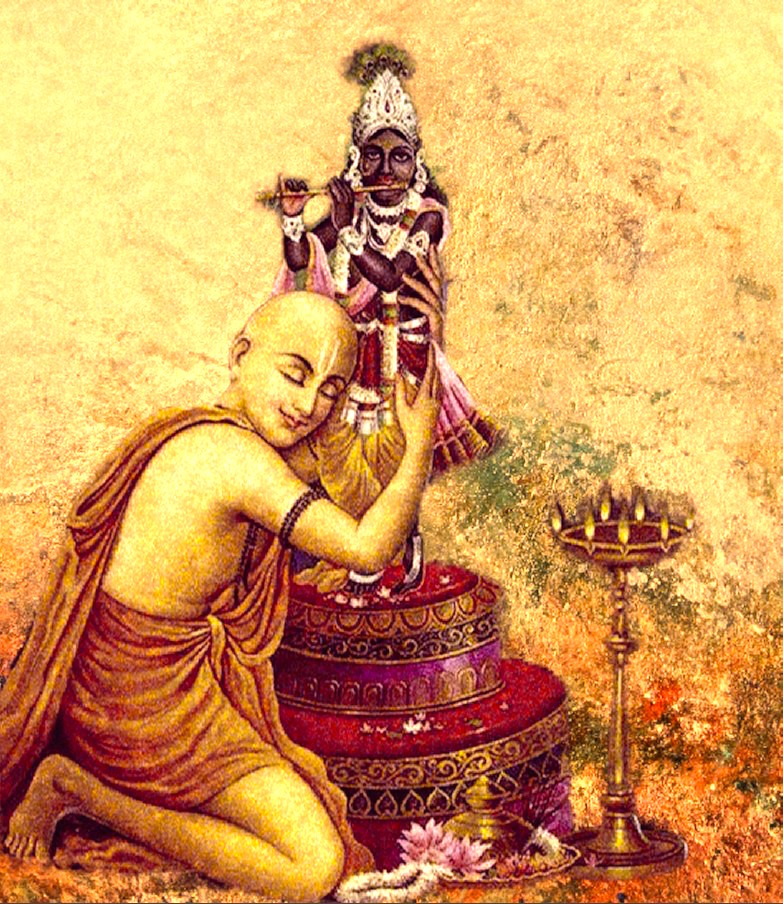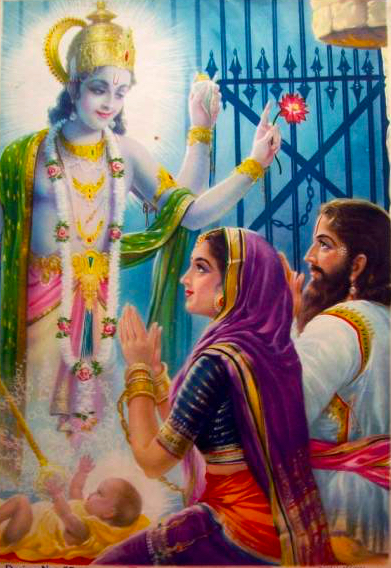Mahanidhi Madan Gopal Das
Most all of the 8,400,000 species of life have eyes to see the reality they live in. It is only human beings, however, that have the eyes to see God, Bhagavan Sri Krishna.
In Gita, Sri Krishna describes the vision of the perfect person who sees Krishna everywhere. By such divya -drshti, divine sight, one captures Krishna in the heart, and keeps Krishna forever bound in the embrace of one’s loving eyes.
Sri Krishna explains this point in Bhagavad-gita (6.30):
yo –mam –pashyati -sarvatra
sarvam -ca -mayi -pashyati
tasyaham -na –pranashyami
sa -ca -me -na -pranashyati
Bhagavan Sri Krishna says, “One who sees Me everywhere and sees everything in Me, never loses sight Me, nor do I lose sight of him.”
Sri Sridhar Swamicharan: In other words, Sri Krishna is saying, ‘Since I am continually present before one, one is never lost to Me.’
There are two levels of seeing Bhagavan Sri Krishna everywhere.
1- With eyes coated with pure spiritual love, Krishna prema, like the cowherd damsels of Vrajabhumi and sadhana-siddha Krishna premi-bhaktas.
2- With eyes coated with desire and eagerness to see Sri Krishna everywhere.
At this level, one has not yet attained Krishna prema, but one does have a strong, focused and continuous desire, backed by intense eagerness to see Sri Krishna. One thinks, “I really, really want to see Krishna. No matter what it takes, I MUST SEE KRISHNA in this very life!”
Chaitanya Mahaprabhu says, “A devotee is one who firmly believes Krishna will show His mercy, krishna –krpa-karibena- drdha- kari-jane.” (Caitanya-caritamrta 2.23.28)
Having a genuine, driving desire and eagerness to see Sri Krishna will automatically make one detached from maya and one’s unlimited material desires. Srila Prabhupada said that eagerness is absolutely essential to make tangible spiritual advancement.
Srila Prabhupada says, “We must be very, very eager to see Krishna; then you can see Krishna. Whether you are lusty or a thief or whatever, somehow you must develop this eagerness, this desire: ‘I MUST SEE KRISHNA!’ Then KRISHNA WILL BE SEEN!” (Journey of Self Discovery 2.2)
Sri Ananta Dasa Babaji Maharaja says, “Eagerness is the very LIFE FORCE OF BHAJAN! A devotee with loving eagerness will receive abundant grace from Sri Krishna. Eagerness is always the best means to fulfill our desires. Without it, there is no taste in sadhana and one can’t attain anything!”
Out of His infinite love and compassion, Sri Krishna personally teaches how anyone, even without Krishna prem, can always see and remember Krishna everywhere throughout the day and night. All it takes is the desire to see Krishna, and the eagerness to sincerely try.
By reading and remembering the following simple Gita verses, one will easily SEE KRISHNA EVERYWHERE day after day, until the last when Sri Krishna Himself will appear, and take you to Vraja Dham to see and be with Krishna forever!
We have arranged the following verses, all personally spoken by Sri Krishna in Gita, in a logical sequence of time and category that follow one’s daily activities beginning with waking.
Time: I am time, kala -asmi. 11.32
Existence: I am the life of all that lives, jivanam –sarva –bhuteshu. 7.9
Speech: I am the letter A, aksharanam –aksharo –asmi. (10.32) I am the sound in ether, shabdah –khe –aham. 7.8
Water: I am the taste of water, rasa -aham -apsu. 7.8
Chirping Birds: Of birds, I am Garud, vainateyash -ca -pakshinam. 10.30
Trees: Of trees, I am peepul, ashwattah -sarva -vrkshanam. 10.26
Nama/Diksa: I am japa, japa –yagya- asmi. 10.25
Beauty, Wealth, Strength: All beauty, wealth and strength is just a spark of My splendor, yad -yad –vibhutimat- sattvam, srimad -urjitam -mama -tejah -amsha. 10.41
Perfumes: I am the beautiful fragrance of the earth, punyo –gandha –prthivi -asmi. 7.9
Food: I am the fire of digestion, aham -vaishvanaro, (15.14) I am the heat in fire, asmi –vibhavasau. (7.9)
Sunshine, Moonshine: I am the light of the sun and moon, prabha –asmi –shashi- suryayoh. (7.8) Of all bright things, I am the radiant sun, jyotisham –ravih -asmi. 10.21.
Exercise: I am the strength of the strong, balam –balavatam –aham. 7.11
Wind: Of purifiers, I am the wind, pavana –pavatam –asmi. 10.31
Months: I am November-December, masa -margashirsha -aham. 10.35
Seasons: I am spring, rtu –kusumakara. 10.35
School: I am the intelligence of the intelligent, buddhi –buddhimatam –aham. (7.10) Of all knowledge, I am knowledge of the self, adhyatma –vidya –vidyanam.
Intelligence: I am the knowledge of the wise, gyanam –gyanavatam –aham. 10.38
Work: I am the ability in persons, paurusham –nrshu. (7.8) I am the beginning, middle and end of all creations, sargan –adir –madhya- anta. 10.32
Animals: Of all animals, I am the lion, mrganam –mrgendra –aham. 10.30
Ocean: Of all water bodies, I am the ocean, sarasam -asmi -sagarah. 10.24
Rivers: I am Ganga, asmi -jahnavi. 10.31
Fish: I am the shark (dolphin ?), jhashanam -makara -asmi, 10.31
War: Of generals, I am Skanda (son of Siva), senaninam -aham -skanda. 10.24
Moon: Among all the stars, I am the moon, nakshatranam -aham -shashi. 10.21
Intimacies: I am union that is not against religious principles, dharma –aviruddha –kama –asmi. 7.11
Secrets: Of secrets, I am silence, maunam -asmi -guhyanam. 10.38
In all these simple everyday ways, you can always remember Krishna everywhere, and see His beautiful sweet and charming, smiling face in everyone’s heart and everything that you see throughout the day.
Seeing Krishna everywhere ki jai!
Jai Jai Sri Radhe!

